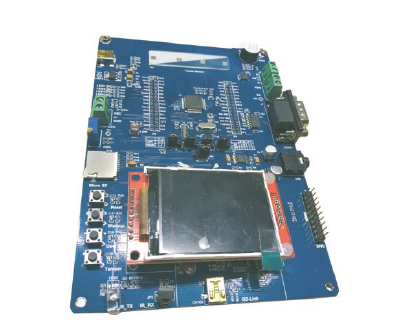Zoltán Kiss- Area Sales Manager - East Europe - Endrich GmbH.
GigaDevice 32 bit ARMCortex microcontrollers (2.)
16 May 2018
![]()
Summary :
In the first part of the series of these articles we reviewed the architecture of the GigaDevice GD32™ARM® Cortex®M3 and CortexM4 RISC MCU families, in this paper we are going to introduce the evaluation boards available for testing the microcontrollers and also a possible way to start working with them using a popular development system called CrossStudio for ARM 4.1. As an example in a later issue we will create a simple code operating a bicolor LED with different blinking frequencies.
GD32 is a new 32-bit high performance, low power consumption universal microcontroller family powered by the ARM Cortex-M3 RISC core, which targeted at various MCU application areas. GD32 family integrates features to simplify system design and provide customers wide range of comprehensive and superior cost effective MCU portfolios with proven technology and great innovation.

The GD32 MCU incorporates the 32-bit ARM Cortex-M3 processor core operating at 1 08 MHz max frequency with Flash accesses zero wait states to obtain maximum efficiency. GD32 series of MCUs also bring much advantage to the end-user. The max speed of GD32 MCU has increased 50% than the market competing products. Code execution efficiency of the same frequency has enhanced 30%-40%. Current consumption of the same frequency has reduced 20%-30%. These performances provide maximum capability and bandwidth options for various market requirements. In order to start testing the GD32 family microcontrollers GigaDevice launched several different versions of test boards from basic starter kits to fully equipped evaluation boards.
GD32 Evaluation board
The GigaDevice Evaluation Boards allow full evaluation of the on-chip peripherals, provide connectivity, and also feature external memories and TFT display. The GD-Link is also included on all of the boards. GD321 50R-EVAL evaluation board uses GD32F1 50R8T6 as the main controller. As a complete development platform of GD32F1x0 value line powered by ARM® Cortex™-M3 core, the board supports full range of peripherals. It uses mini-USB interface to supply 5V power.

SWD, Reset, Boot, User button key, LED, I2C, I2S, USART, RS-485, 2.2” TFT-LCD, HDMI-CEC, LDR, TSI, IR LED, IR Receiver, RTC, SPI, USB, ADC, DAC and Extension Pin are also included. The EVAL Board uses Mini USB connector to get power, the hardware system power is +3.3V. A Mini USB cable and a J-Link tool are necessary to download programs. It is possible to select the required boot mode (boot from user memory, system memory or SRAM) and then power on, a LED will turn on, which indicates the power supply is ready. The hardware schematics of some of the featured functions and interfaces.

GD32 Starter kit

The GigaDevice Starter Kits include an I/O Extension Header for all of the package pins to allow quick connection of prototyping and testing. On all of the boards the GD-Link, - a programmer and debugger for the GD32 MCU’s - is also included. This starter kit can be connected to the PC via USB cable, it provides both power supply and data link connection for accessing the controller and debugging our program. For our later demonstration program, we will need to use the two user LEDs LED1 and LED2, which are connected also to the PF6 and PF7 GPIO ports of the microcontroller. These two GPIOs are also accessible on the extension header on the left side of the board. To make our demonstration more visible, we are going to connect the anodes of a bicolor LED to the PF6 and PF7 pins of the header, and the common cathode of the LED to the GND pin. This LED will operate synchronous to the LED1 and LED2 green SMD LEDs located on the top of the board.

Development tools
GD32® family integrates features to simplify system design and provide customers wide range of superior cost effective MCU portfolios with proven technology and great innovation.
Comprehensive support for GigaDevice microcontroller devices are available for several well-known standard development tools such as Keil compiler - available at: http: //www2.keil.com/gigadevice - or Rowley’s CrossWorks for ARM providing complete development environment for creating, debugging and verifying embedded applications.
CrossWorks for ARM4.1



| Share on Facebook | Share on LinkedIn |
References
This article has been published on the following locations:
| # | Media | Link |
|---|---|---|
| 1 | Elektronet 2018/4 | Elektronet : elektronikai informatikai szakfolyóirat, 2018. (27. évf) 4. sz. 23-26. old. |
| 2 | TechStory M2M | Kiértékelő és tesztpanelek fejlesztőmérnököknek |
| 3 | Hungarian version | GigaDevice 32 bites ARM® Cortex® mikrokontrollerek - 2 |


